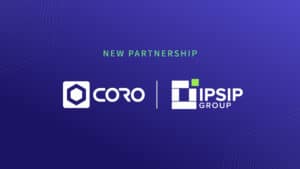At first, adding more cybersecurity vendors to your stack may seem like the best way to guard your clients against the changing landscape of cybersecurity.
In reality, the opposite is true.
Juggling multiple point solutions, licensing agreements, and support channels eats away at valuable time and resources, leaving gaps in your protection… and causing frustration all around.
The best case scenario: simplify the complexity by selecting a single cybersecurity vendor that can do it all.
But is this vendor consolidation utopia truly achievable, or just another pipe dream? Let’s delve into the realities of simplifying your security stack—the potential pain points, the promised gains, and whether that “one ring to rule them all” truly exists for an MSP’s cybersecurity needs.
Why Switch To a Single Vendor?
It wasn’t that long ago that experts were advising MSPs to use multiple cybersecurity vendors to achieve the best possible cybersecurity posture. It’s safe to say they’ve since changed their minds for a few key reasons:
- Managing multiple vendors for different security solutions can be a headache. Consolidation simplifies management, training, and reduces the chances of compatibility issues.
- One vendor means fewer invoices, reports, and support tickets, freeing up time and resources for other tasks.
- Delivering unified security solutions under one platform simplifies deployment, monitoring, and response, leading to faster and more effective incident resolution.
- Elimination of redundancy: Consolidating can help eliminate overlapping or redundant functionalities across different solutions, reducing overall security spend.
- Integrated solutions: Modern vendors offer comprehensive security platforms with integrated solutions, leading to improved threat detection, prevention, and response capabilities.
- Unified visibility and insights: Single vendor platforms provide consolidated dashboards and reporting, offering a holistic view of the security posture across different environments.
- Enhanced expertise: Partnering with one vendor allows MSPs to leverage their deep security expertise and knowledge base, benefiting both the MSP and their clients.
Don’t forget that consolidation isn’t a one-size-fits-all solution! You have to choose a vendor with a comprehensive security portfolio or platform that meets your needs. They also need the ability to support your future and current client base.
Choosing The Right Vendor
Choosing the right vendor doesn’t have to be a complicated task. Here’s where to start:
Deep Dive into Your Needs
Before looking for a vendor, spend some time mapping your clients’ unique security landscape. What are the most critical assets, threats, compliance requirements, and budget limitations? Once you have a complete view, you’re in a better position to evaluate who the best partner is to keep your clients protected.
Platform vs. Portfolio: Know the Difference
First things first, differentiate between platform and portfolio solutions. Platform vendors offer highly integrated security products within a single ecosystem, providing a unified defense. Portfolio vendors, on the other hand, offer customizable packages of individual products. While flexibility is alluring, remember, “customizable” doesn’t always translate to integrated. Analyze if a vendor truly offers a single platform or multiple consoles, a telltale sign of a portfolio approach.
Solutions – Not Features
Don’t get swayed by a list of impressive-sounding product features. Look for a vendor who prioritizes understanding your specific challenges and goals. Do they actively engage in discussions? Are they willing to work with limited resources and budgets? This collaborative approach fosters a true partnership, crucial for navigating evolving threats and business demands.
Alignment With Business Objectives
A good vendor aligns not just with your technology needs, but also with your business and organizational objectives. Look for solutions that address these objectives, for example, offering pay-as-you-go options for financial flexibility. Vendors that have a deep understanding of MSP/vendor partnerships and a proven track record are your best bet.
Conquering Legacy Silos and Inventories
Transitioning from legacy systems can be tricky. Interrogate how your potential vendors approach handling legacy products. Look for vendors who seamlessly integrate your existing systems, reducing vulnerabilities and minimizing disruption during the phaseout process.
Building a Strong Vendor Relationship
As you consolidate, it’s crucial to nurture a strong relationship with your new vendor. Actively communicate your needs as they change and keep them informed of your customers’ demands. A proactive vendor will likely be developing solutions you can seamlessly integrate for your customers.
One Platform, One Security Solution
By choosing a vendor with a unified platform, you gain significant advantages. A single platform translates to enhanced security, eliminating the need to track multiple siloed defenses and simplifying breach response. Streamlined communication with one vendor facilitates faster issue resolution and improved efficiency.
Looking ahead
A single automated and integrated platform that meets your security requirements will drastically reduce your operational costs. Not only are you lowering contract costs, but you are also reducing the time required for employees to learn new systems and solutions. Furthermore, you can strengthen your negotiating position with your vendor for bulk pricing and other requirements to reduce overall expenses. After all, you’re all supporting one another’s success.
Finally, with a single provider and platform, your entire client base will be more secure, with fewer connectors to track in the event of a breach. That is also one vendor to contact at this hectic time. With fewer points of contact, you can address the issue more efficiently and overcome any chinks in your armor a lot quicker.
Is it simple to consolidate under a single vendor? With the right vendor, it is.

















